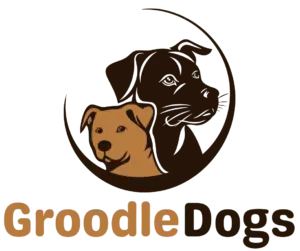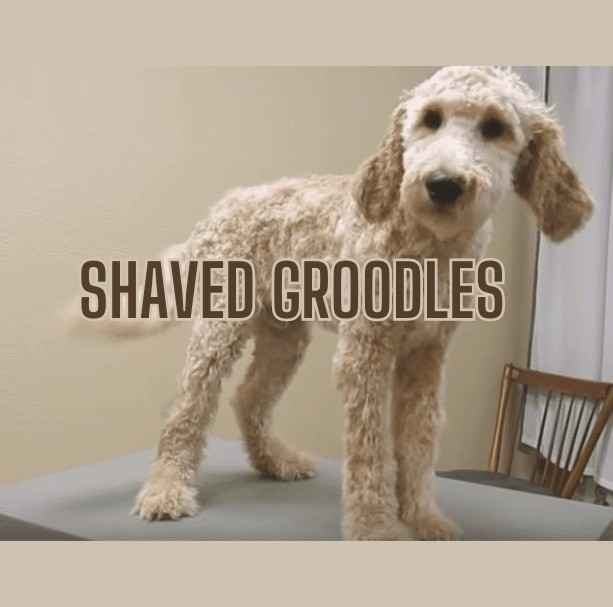Groodles, also known as Goldendoodles, are a crossbreed between the Golden Retriever and Poodle, popular for their hypoallergenic coats and friendly, intelligent nature. Grooming is a significant part of owning a Groodle, and some owners opt to shave their dogs for easier maintenance or to help with seasonal heat. However, shaving Groodles comes with its pros and cons, which every owner should consider. This article covers everything you need to know about shaved Groodles, including when and why to shave, potential benefits, drawbacks, and proper care.
Why Shave a Groodle?
There are several reasons why an owner might choose to shave their Groodle:
- Heat Management: In hot climates, Groodles can suffer from heat due to their thick coats. Shaving helps them cool down and avoid heatstroke, especially in the summer.
- Easier Grooming: Shaving reduces matting and tangling of hair, which is common in Groodles due to their curly or wavy coats. It makes brushing and grooming more manageable and easy.
- Allergy Management: Some owners or family members may be allergic to dog hair or dander, and shaving the dog can reduce the amount of shedding and allergens in the home.
- Skin Conditions: Shaving is sometimes recommended by veterinarians for treating skin conditions, infections, or parasite infestations to help medications reach the skin more effectively.
Shaving Considerations
While shaving might seem like a good solution for some owners, it’s not always the best choice. Consider these factors before shaving your Groodle:
- Coat Type: Groodles have different coat types depending on their genetic makeup—some have straight, wavy, or curly hair. Shaving a curly-coated Groodle can cause the coat to regrow unevenly or become coarser.
- Sunburn Risk: A shaved dog has little protection from the sun, increasing the risk of sunburn. Groodles with lighter-colored coats or pink skin are particularly vulnerable. If shaved, it’s essential to limit sun exposure or apply pet-safe sunscreen.
- Coat Regrowth: A Groodle’s coat may not grow back the same after being shaved. It may become patchy, thinner, or even lose some of its texture. For older dogs, coat regrowth can be slow or incomplete.
- Hypothermia in Winter: Shaving removes the natural insulation provided by the dog’s coat. In colder months, shaved Groodles are at risk of getting cold more easily and may need dog sweaters or jackets for outdoor activities.
Alternatives to Shaving
Shaving isn’t always necessary, especially when there are other ways to manage a Groodle’s coat:
- Trimming: Instead of shaving, regular trimming keeps the coat shorter and more manageable while retaining its natural texture. Common styles include the “puppy cut,” which leaves about one inch of fur across the body.
- Professional Grooming: Scheduling regular grooming sessions can keep your Groodle’s coat clean, tangle-free, and manageable without the need for a full shave. Groomers are experienced in maintaining the coat at an ideal length.
- Brushing: Regular brushing prevents matting and tangling, reducing the need for a full shave. A Groodle should ideally be brushed every day or a few times a week, depending on their coat type.
- Cooling Mats: In the summer, rather than shaving, using cooling mats, plenty of water, and keeping your Groodle indoors during peak heat can prevent overheating.
Proper Care for Shaved Groodles
If you do decide to shave your Groodle, proper care is essential to keep them comfortable and healthy:
- Sun Protection: Since shaved Groodles are more vulnerable to sunburn, limit their time in direct sunlight, especially during peak hours. Apply a vet-approved sunscreen to exposed areas.
- Skin Care: Shaved skin can be sensitive, so monitor your Groodle for any signs of irritation, rashes, or dryness. Use soothing balms if necessary, and consult your vet if you notice any skin problems.
- Winter Protection: In cold weather, make sure your Groodle has a dog sweater or jacket to stay warm. It’s essential to monitor how they handle colder temperatures after being shaved.
- Regular Grooming: After shaving, keep up with regular grooming, as the coat will begin to regrow. Brushing helps avoid tangles in the new hair and maintains the health of the coat.
Pros and Cons of Shaving a Groodle
Pros:
- Easier maintenance of the coat
- Reduction in shedding and allergens
- Prevention of overheating in hot weather
- Helps with skin conditions or infections
Cons:
- Increased risk of sunburn and skin sensitivity
- Regrowth issues, including patchy or coarser coats
- Risk of hypothermia in cold weather
- Loss of natural protection and insulation
FAQs
| Q1. What are the benefits of shaving a Groodle? The benefits of shaving include easier coat maintenance, reduced shedding, heat prevention, and help with skin conditions. Q2. Why should I shave my Groodle? Shaving a Groodle can help with heat management, make grooming easier, reduce shedding and allergens, and assist with treating skin conditions. It can also prevent matting in the dog’s coat. Q3. Is it safe to shave a Groodle? Shaving is safe in most cases, but there are some risks. Shaved Groodles are more prone to sunburn, coat regrowth issues, and hypothermia in cold weather. It’s important to take protective measures after shaving. |
Conclusion
Shaving a Groodle can be a practical solution for some owners, particularly in hot climates or when dealing with skin issues. However, it’s important to weigh the pros and cons, considering the impact on coat health, sun protection, and cold-weather management. For many owners, regular grooming and trimming can achieve the desired results without a full shave. Always consult with a professional groomer or veterinarian before deciding to shave your Groodle, as they can provide guidance based on your dog’s specific coat type and needs.




